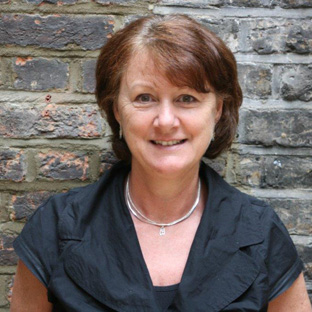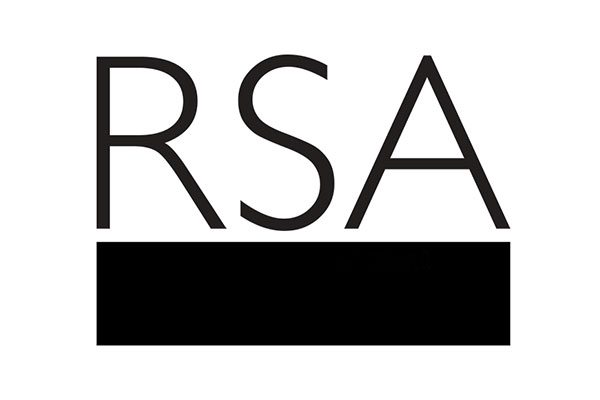Guest blogger Jacqueline Lloyd Smith, FRSA, discusses a recent Fellows' meeting in Vancouver where she introduced the principles of the LEGO® Serious Play™ methodology

Globally, many companies are working with Management Consultants who use a facilitative approach with a creative tool called LEGO Serious Play. Yes, this is the LEGO brick, the toy that was originally designed for children and named after the Danish phrase leg godt, which means "play well".
You might be wondering, how can adults play with LEGO to generate better ideas, improve decision making, or communication? Following is an overview of the process, how it works, and a description of how, this spring, Canadian Fellows and Friends of the Society met in Vancouver to discuss the strategic direction for the group going forward, utilizing this innovative tool to facilitate deeper, richer conversations.
First, what is this tool? In the early 2000s, the LEGO Group, struggling with its own strategy, decided to invest in learning. Because the toy had helped shape so many young minds, could it also be used to help adults address complex business processes such as strategic thinking, innovation mining, problem solving, and decision making? Great question. We know that business, organizations and communities struggle to do these things well, especially now, during rapid times of change requiring a more agile mindset.
They worked with two psychologists who created the framework for the process, which has four steps:
- Constructing
- Giving meaning
- Storytelling
- Reflecting
They discovered the outcomes were:
- Insight
- Confidence
- Commitment
They found that this process allows for 100% engagement because it keeps all participants in the Flow Zone, as described by Mihály Csíkszentmihályi. During its early stages of development, the process was introduced to a community of management consultants who formed the LEGO Serious Play partner community.
 So, how and why does it work?
So, how and why does it work?
These practitioners continue to use the tool today and they improve it each time they apply it to a new business situation or challenge. No two workshops are alike because they are always customized to meet the outcomes of those using the tool. Adopting an agile mindset during the process allows participants to discover new issues and to change direction, as the facilitator adjusts to drive the group toward its desired outcomes.
The process engages whole brain thinking. We tell people to think of their hands as the search engines for their mind, as their brain is a perfect computer system that holds complex information. But the brain needs a process to tap into that hidden power to bring it out into the light for objective examination. When we use our hands for building and we have the limitations the bricks provide, it is amazing how quickly the brain works through the hands to solve problems.
The facilitator constructs probing questions for the group to answer, starting with simple stepping into more powerful and complex questions, allowing everyone to answer from their perspective. Participants answer the questions through model building, which uses applied and systematic creativity to move the group forward. A strict etiquette is applied to all sessions, which the facilitator maintains to keep the group on track. This etiquette allows for an objective look at complex and challenging topics. It facilitates turn taking, model interpretation by the model builder, consensus building, and it provides a safe and playful environment where participants can take risks and share information.
People are building metaphorical models called artifacts. These artifacts hold complex information that is communicated through the process of story telling. This is effective because our brains use the frontal cortex to solve problems, but this area is also only able to remember about seven things at a time. So typical complex problem solving can be challenging for the brain and since the brain is wired for survival and hates confusion, the brain prefers to default to something that it has already tried before.
How many times have you attended a meeting, only to leave thinking it was completely unproductive?
 This process drives new ideas and different thoughts by the sheer nature that we are not thinking with the help of a flip chart or the dreaded PowerPoint presentation. The LEGO® process also uses systems thinking to dive deeper into problems, so participants consider and address everything on the business landscape. This is important because we know that businesses, communities, and organizations all function as part of a bigger system. The system is created through the careful placement and connection of the artifacts. But it is not the LEGO bricks or the model at work here. It is the conversations that people are having while using the bricks as a prop to help give the thinking a hand. As you can imagine, LEGO Serious Play is a great tool to facilitate the design thinking processes.
This process drives new ideas and different thoughts by the sheer nature that we are not thinking with the help of a flip chart or the dreaded PowerPoint presentation. The LEGO® process also uses systems thinking to dive deeper into problems, so participants consider and address everything on the business landscape. This is important because we know that businesses, communities, and organizations all function as part of a bigger system. The system is created through the careful placement and connection of the artifacts. But it is not the LEGO bricks or the model at work here. It is the conversations that people are having while using the bricks as a prop to help give the thinking a hand. As you can imagine, LEGO Serious Play is a great tool to facilitate the design thinking processes.
Third, how was it used by the RSA?
Approximately forty people participated in the event. Graphic posters displayed around the room indicated the nine areas for discussion, which the organizers identified beforehand. The groups self-sorted by selecting a topic they felt passionate about for small group work. The first step of engagement is to ensure that people are working on topics they are interested in, have some connection to, and where they feel their involvement can make a difference. The topics included:
- Public Engagement and Collaboration: To enhance neighborhood police services
- Improving Substance Abuse Services: Through the engagement and support of drug users
- Making Connections for New Canadians: Working to ensure a sustainable future
- Transformation of Local Libraries: Creating business hubs for lifelong learning
- The Social Enterprising Prison: Creating programs for inmates to give back, while building needed skill sets
- Rethinking Education: Creating systems and practices that are truly learner centered
- Easing Social Isolation and Loneliness of Seniors: Through service redesign
- People Centered Cities: Creating better public space that's lively, healthy, attractive, sustainable, and safe
- Energy and the environment: The path forward
Participants used a human bar chart to form small groups of five to seven people. This showed where people, as a group, had interest and focus. Some topic areas received no interest and those were not unaddressed.
Once participants selected their interest, they worked together using systematic creativity facilitated by members of the Strategicplay® Group from Vancouver. The building began with individual models and then the groups worked together to build larger joint models to explore and gain a deeper understanding of these complex issues. The facilitated discussions allowed participants to see, hear, and experience rich conversations and to unearth perspectives from all participants.
 For new members and friends it provided an opportunity to see the types of work in which the RSA is engaged, how their fellow participants view the topic, and how they themselves might like to become more involved.
For new members and friends it provided an opportunity to see the types of work in which the RSA is engaged, how their fellow participants view the topic, and how they themselves might like to become more involved.
Following the session, participants formulated a planning committee, which has now narrowed the focus areas down to a few topics with the aim of putting serious action projects together.
For more information or to understand more applications of StrategicPlay with LEGO Serious Play visit: www.strategicplay.ca
Jacqueline Lloyd Smith, FRSA
Related articles
-
Three reflections on RSA Meetups: Human connectivity and a catalyst for change
Dr Dee Gray, Alan Henry and Pam Luckock FRSAs
This blog is written as three reflections, inspired by recent on RSA regional ‘meet ups’ in north Wales. It is written by RSA Fellows Dr Dee Gray, Alan Henry and Pam Luckock.
-
"Thank you for teaching me how to look"
Sally Sheniman FRSA
Over three months from end of January to beginning of April in 2019, Artists in Residence at C2C Social Action worked with vulnerable women in Northampton, teaching art skills and bolstering confidence.
-
The Democratisation of Planning
Michael Ocock
Michael Ocock advocates for systems thinking and a change to the way we think about public engagement.


Join the discussion
Comments
Please login to post a comment or reply
Don't have an account? Click here to register.
I was fortunate to be at this event and I can highly recommend the technique. I was surprised by how quickly such a disparate group could come to consensus and understanding.